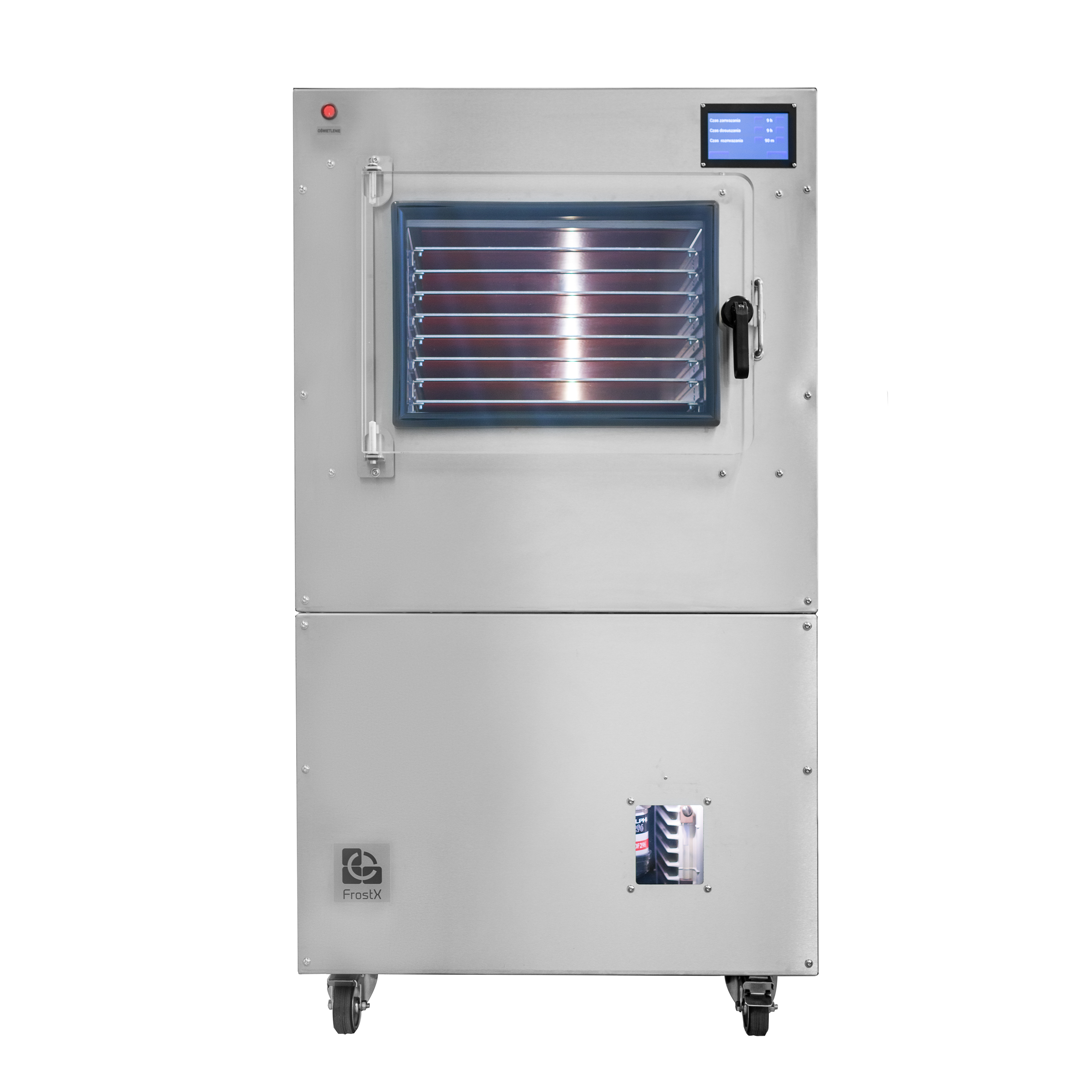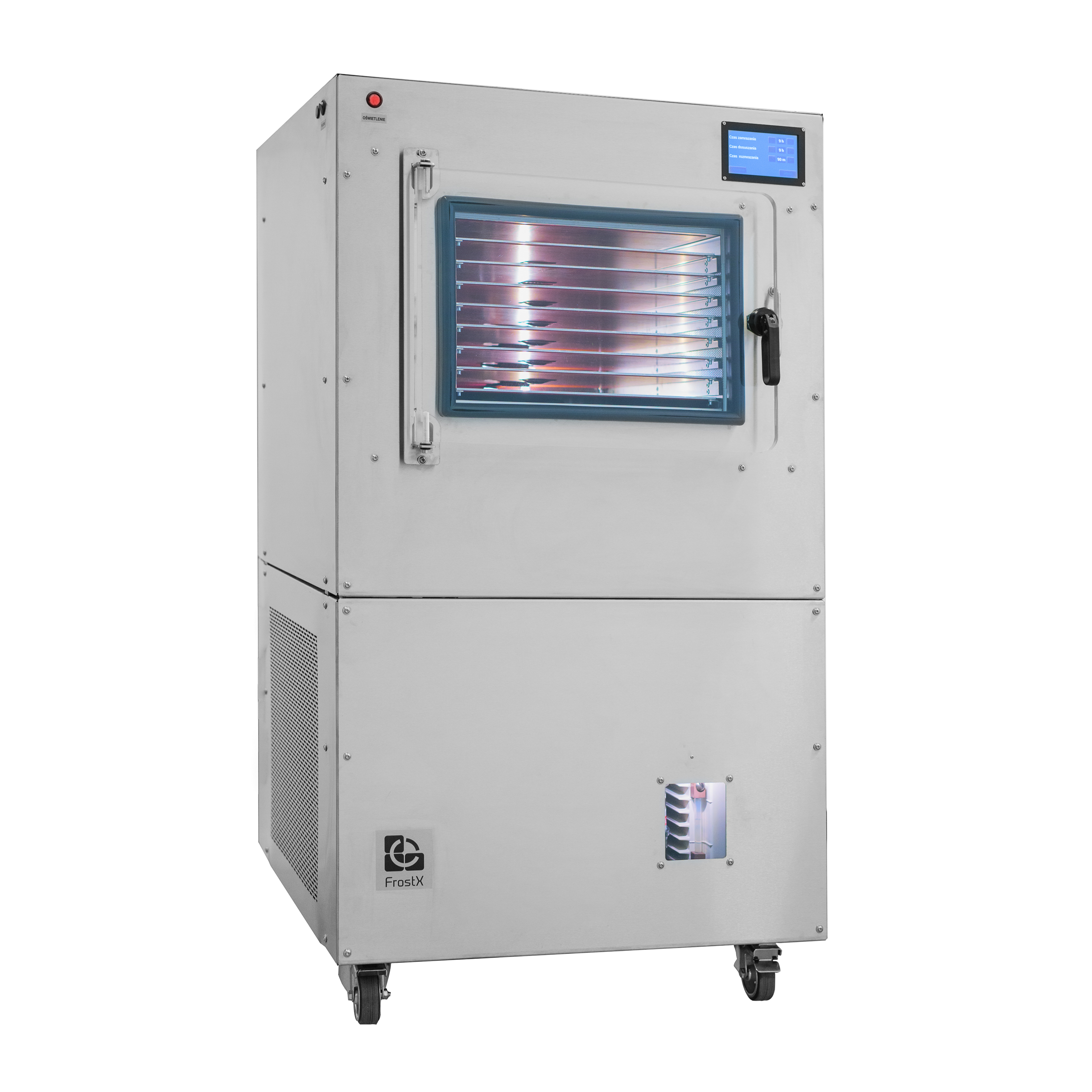Over the course of millennia people have managed to discover several dozen more or less efficient methods of food preservation. It is a very important skill enabling human survival, in particular in the Polish climate, where vegetation period is very short, but intense. Importantly, this short vegetation period influences the prices of subsequent products during a given season of the year. Cranberries constitute an example of this kind of product – freeze-drying makes it possible for us to enjoy the properties and flavour of this fruit throughout the year.
Freeze-dried cranberries — a treasure of autumn all over the year
Cranberries are a type of fruit that contains a lot of beneficial minerals, vitamins as well as other chemical compounds having a positive influence on our body. Its harvest period begins in mid-September and finishes around early November.
This berry has a multifaceted beneficial effect on our body as it may:
- strengthen our cardiac muscle
- strengthen our immune system
- lower blood sugar
- support our body in fighting gastric ulcers as well as skin conditions
- have an antiseptic and antifungal effect
- reduce the symptoms connected with bladder infections
As far as vitamins and minerals are concerned, cranberries contain among others vitamins C, E, B1, B2 and B12 as well as aluminium, zinc, cobalt, silver, iron, manganese or calcium.
Prices of fresh cranberries during the harvest season vs freeze-dried off-season
During the harvest season, the prices of cranberries plummet compared to the rest of the year in connection with common availability of this product and the quantity available on the market that exceeds the demand, as a result of which producers are forced to decrease its prices in order not to be obliged to throw it away and thus record loss if they do not manage to sell. They can of course try and store the berries in freezers, but it requires vast storage space and thus high energy consumption.
The situation changes when the season comes to its end. It is when producers start to record profits, but not all of them can afford to store frozen berries for long months.
Freeze-drying technology may come in handy here. The weight of freeze-dried cranberries is only 15% of total original weight of berries before being subjected to the procedure, which means that having fed the lyophilizer with 1 kg of cranberries, we will obtain ca. 150 g of ready-made freeze-dried fruit. When it comes to prices, the profit per 1 kg of cranberry input can exceed several times the profit from selling unprocessed fruit during the season.
Another advantage is the storage of freeze-dried cranberries – a doy-pack bag and a dark place with moderate humidity are everything we need.
As a preservation method, freeze-drying makes it possible to retain nearly all properties and nutrients of the product from before lyophilization, thanks to which freeze-dried cranberries can have a beneficial effect on our bodies all year round. This constitutes an advantage both for producers as well as consumers.
Compressed freeze-dried food has significant advantages, such as reduced transport and storage volume as well as less strict requirements when it comes to packaging materials compared to non-compressed products. In order to prevent fragmentation during compression it is necessary for the product to retain appropriate plasticity. It is currently obtained by re-hydrating freeze-dried food before compression.
Lyophilization is considered one of the most efficient food dehydration methods – very high quality of products is thus preserved together with minimal loss of nutrients compared to fresh food. Importantly, the process influences product shape to a minor extent. Retaining physical shape of products has always been desired. Nevertheless, freeze-dried food does not fully preserve its properties from before lyophilization as it is characterized by porous structure – it is light and brittle, with low packaging density.
Disadvantages of low packaging density:
- as porous structure is prone to pick up moisture, special packaging is necessary
- large packages are necessary for small quantities (per weight) of the product
- freeze-dried products crumble easily – particles are easily formed during loading and packaging
- large storage spaces are necessary
Numerous studies are conducted aimed at finding solutions to these problems. It can be obtained for example by compressing such food; however, to make it possible, freeze-dried food should remain flexible. It is possible when the content of water in freeze-dried food is between 5% and 20% (depending on the product). When it comes to the products with high sugar content, for example fruit, plasticity can be obtained thanks to temperature manipulations.
Freeze-dried food (slightly moistened or heated) is placed in a chamber and subjected to high pressure with the use of hydraulic press. Next stage consists in re-drying or re-cooling such food. As far as products with low sugar content are concerned, more stages might be necessary.
It is believed that maximum compression level is directly connected with the original content of water in the food. Apart from eliminating the volume of free spaces between subsequent chunks, compression may also bring the elimination of free spaces produced as a result of ice crystals sublimation.
Final moisture level of compressed samples was always similar to moisture content in non-compressed samples, freeze-dried at the same time. On the website In most cases, moisture content fell within the range 1.5%-5%, which proves that compression during lyophilization does not prevent dehydration (final moisture did not depend on compression level).
Re-hydration of compressed freeze-dried food
The re-hydration of compressed samples was fast and in most cases the equilibrium state was restored within 15 minutes. The samples in general regained their pre-compression volume after re-hydration.
Vegetables were the most efficiently re-hydrated in cold water, while beef bones re-hydrated faster in warm and hot water. However, at higher temperatures, the meat would turn dark and seemed cooked.
Re-hydration in cold water, although slower, resulted in higher quality of the meat product. It was noticed that freeze-dried, non-compressed vegetables re-hydrated to a lower extent than compressed samples.
It seems that compressing freeze-dried food constitutes a very good solution to reduce volume and accelerate re-hydration. This method will for sure become useful in all situations where volume reduction plays an important role, for example in civilian and military transport and in the storage of goods.
Sources:



